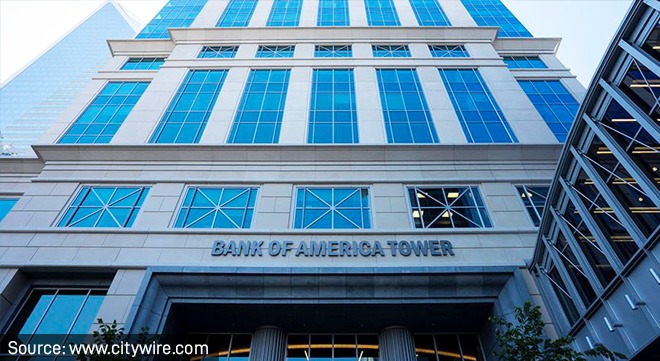All fund managers surveyed by the Bank of America (BofA) Global Research expect the South African Reserve Bank will cut the repo rate by 25 basis points this year. Most managers believe the rate will be cut when the Monetary Policy Committee meets on Thursday, while 17% of the managers surveyed forecast the rate will be cut in March.
John Morris, BofA’s director and chief investment strategist for South Africa, said last week that fund managers believe there will be two repo rate cuts this year, although the market is pricing in only one. In BofA’s view, there will be only one rate cut, of 25 basis points, this year.
The repo rate is currently 7.75%.
BofA’s fund manager survey was conducted between 10 and 16 January 2025 and incorporates the views of 18 managers.
A net 83% of managers expect the economy to get “a little stronger” over the next 12 months; up from 78% and 75% in the surveys conducted in December and November, respectively.
A net 39% of managers expect core inflation be “slightly higher” in the next 12 months, down from 44% in December. The percentage of respondents who expect inflation to remain unchanged increased from 11% to 28%.
BofA forecasts inflation to average 4.3% this year, which is below the 4.5% midpoint of the SARB’s target range of 3% to 6%. If inflation moves above the target, it anticipates a rate hike at the end of 2025.
Managers are less positive about the appreciation the rand over the next 12 months than they were in December. They expect the average exchange rate weakening to R17.77/US$ compared to R17.11 last month.
‘Rand is under-valued’
BofA strategist Mikhail Liluashvili said the bank believes the rand will appreciate throughout this year. It forecasts the rand will strengthen to about R18.30 in the second quarter, to R18 in the third, and R17.50 in the final three months of 2025. The rand will likely trade at about R17.30 in the first quarter of 2026.
Liluashvili said, according to BofA’s modelling, the rand is the most under-valued currency in the emerging market universe and has room to appreciate as soon as the dollar peaks. The rand is about 12% undervalued, according to BofA’s calculations.
He said the rand is driven mainly by “emerging market effects”, and BofA expects emerging market currencies to surprise the market “to the upside” towards the end of the first quarter.
“Positioning in dollars is crowded and close to all-time highs, at least against EMFX [emerging market foreign exchange],” said Liluashvili. “The rand looks significantly undervalued […] which suggests it should be the first emerging market currency to rally should the dollar peak.”
Higher economic growth forecast
Tatonga Rusike, the sub-Sahara Africa economist for BofA Global Research, said the bank forecasts the South African economy will grow by 1.6% this year, compared with less than 1% in the previous two years.
Rusike said the higher growth will result from reduced power cuts or no loadshedding, and confidence in the Government of National Unity (GNU) turning into domestic investment and improved consumption. Continued reforms will also help to stimulate domestic investment, particularly in the logistics sector.
The bank believes the GNU will be stable this year despite “public frictions”.
Rusike said inflation is below the SARB’s target, paving the way for a rate cut this month.
Inflation edged up slightly to an annual rate of 3% in December from 2.9% in November.
He said BofA believes that global risks will come to the fore after January, resulting in higher inflation in the second half of the year. The bank no longer expects a rate cut in March.
Tensions between the US and SA
One of the risks is an increase in tensions between South Africa and the US over foreign policy. However, Rusike does not believe these tensions will result in South Africa being penalised by the US.
He said there will be opportunities for the GNU to shape policy and adjust the government’s current approach towards, for example, Ukraine/Russia and Israel/Palestine and avoid any negative penalties.
There has been speculation that tensions with the US could result in South Africa’s exclusion from the AGOA, the US-Africa free-trade agreement.
Rusike said losing AGOA benefits would not have a significant impact on the country’s economy because trade with the US is relatively small and the country’s export base is highly diversified.
According to research published by the Brookings Institution this month, a loss of AGOA benefits would lead to a GDP decline of only 0.06%.
“The narrative that a loss of AGOA benefits would have catastrophic consequences for South Africa is uninformed. Our research shows that the direct impact of the loss of AGOA preferences on South Africa’s export and economic growth would be very small, owing to the composition of the export basket, limited utilization of AGOA, and low (in aggregate) level of preferential margin afforded by these regimes,” said the Washington-based think tank’s study.
However, Rusike said the market reaction to South Africa’s losing AGOA benefits could affect financial assets.
Government bond supply
Another factor shaping the macro-economic outlook is the supply of government bonds.
Rusike said the government’s fiscal performance for the year to the end of February is in line with National Treasury’s estimates. Tax revenue collection has grown by 5%, while spending growth is just under 4%, and it is likely that Treasury will hit its fiscal deficit target of 4.7% of GDP in 2024/25. However, if Eskom’s debt obligations are included in the headline deficit, it rises to 5.6% of GDP.
He said Treasury’s need to borrow in fiscal 2024/25 was reduced by the withdrawal of R100 billion from the SARB’s Gold & Foreign Exchange Contingency Reserve Account (GFECRA) to reduce borrowing and debt-service costs.
The withdrawals from GFECRA in 2025/26 and 2026/27 will be reduced to R25bn in each year. BofA believes Treasury will be going to the bond market “regularly” over the next three years for funding of about R5bn a year. Therefore, the supply of government bonds will increase.
Rusike said a potential risk to the fiscal outlook government more support for Transnet, which could be as much as R50bn.
Possible rating upgrades
He said the country’s sovereign rating could be bumped up two notches over the next three years if the country delivers stable economic growth and the government reduces its debt.
GDP growth of at least 1.5% a year over the medium term will be sufficient, he said.
The three major credit ratings agencies classify South Africa as sub-investment grade, or “junk” status.
Rusike said if the economy grows, S&P Global Ratings may upgrade South Africa’s sovereign long-term credit rating to BB in November, one notch above its current rating of BB- with a positive outlook, followed by another upgrade in 2026.
A BB rating is still two levels below investment grade on S&P’s ratings scale.
S&P revised its outlook on South Africa’s BB- rating to positive from stable in November last year, citing an expected improvement in economic growth and investment on the back of the formation of the GNU.
BofA believes the improved sentiment towards South Africa should prompt Fitch to follow suit and raise the outlook on its credit rating from stable to positive this year. Fitch assigns a BB- sovereign rating to South Africa.



